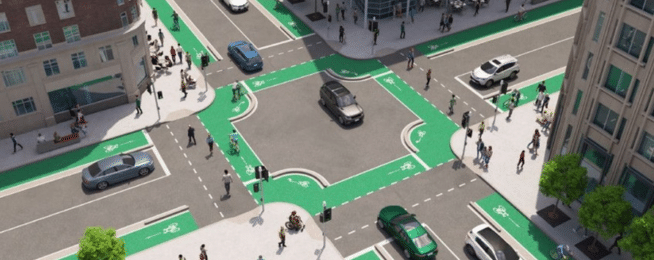Bike riders in Canberra may soon enjoy safer passage through the city, as the ACT government pursues best-practice intersection design prioritising active travel.
A draft best-practice design guide has been put to the public for consultation, and includes recommendations to reduce conflict at the city's intersections.
These are trouble spots for people on bikes. The draft guide cites ACT Police data, which shows that up to 53% of collisions involving riders in urban areas occur at intersections.
By overhauling the design guidelines for its intersections and streets, the ACT government hopes to alleviate safety concerns and address a key barrier to active travel in the city.
“More Canberrans will walk and ride if it is safer, more accessible, convenient, and enjoyable," says Chris Steel, ACT Minister for Transport and City Services. "This starts with the basic design of our city’s streets. This new design guide ensures that intersections and streets are designed to safely to support all forms of transport including walking, cycling and driving.”
One of the overarching aims is to simplify routes for motor vehicles around the city, by having them converge at fewer locations and by reducing complex intersections.
From there, intersection design can be shaped by user behaviour and the environment — as what makes one intersection great for active travel may not work for another.
For local intersections that conjoin quieter streets with low traffic volumes, the guide recommends introducing mini-roundabouts with squarer kerbs to keep speeds low.
For "collector" intersections, where main streets meet with a neighbourhood's busier streets, the government aims to make bike rider protection the norm.

The designs take their inspiration from European countries such as the Netherlands, and call for treatments that feature continuous bike paths at roundabouts, and protective barriers and dedicated green time at signalised intersections.
“Canberrans can expect to see better streets for people with similarities to Europe’s best cycling cities,” says Minister Steel. “The new designs will not be retrofitted to every street and intersection in Canberra overnight, but once finalised this will be the new standard for all new and upgraded streets and estates.”
The community is invited to provide feedback on the draft design guide up until Friday 2 June, 2023.


